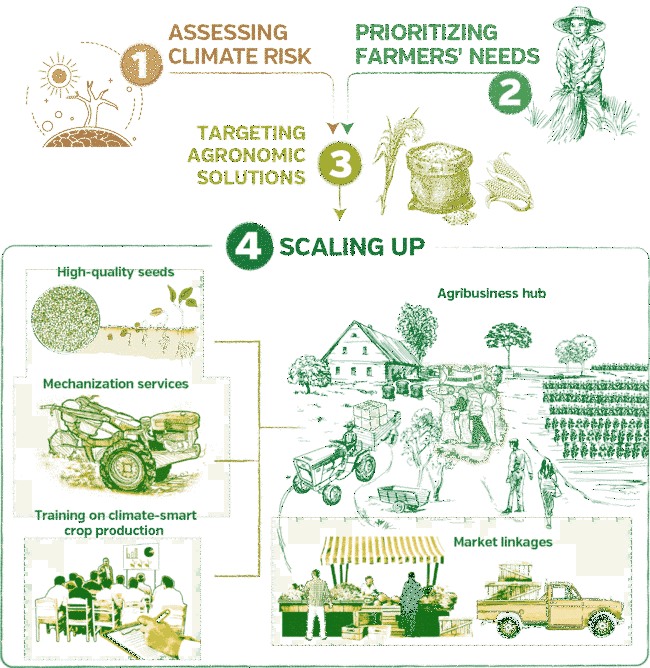Why we work
Resource poor smallholder farmers are the most vulnerable to the effects of climate change. Their agriculture is barely profitable and often environmentally unsustainable.
Through climate-smart crop production practices, climate change adaptation and mitigation is possible. A climate-smart crop system requires smallholder farmers to use quality seeds adapted to local climate and pests, diversify crop systems, use sustainable mechanization, apply soil and water conservation practices, improve water management and invest in agricultural knowledge transfer.
Farming needs to be profitable. By improving their access to inputs, technical advice, credit and other financial services, smallholder farmers have the opportunity to access technologies that improve resilience of crop systems to specific climate stressors and reduce yield gaps.
How we work
What we do
FAO aims to sustainably optimize production through two German-funded projects - Implementing the Save and Grow Approach and Climate-Smart Crop Mechanisations Systems Scaling-Up.

Implementing the Save and Grow Approach
This project identifies farm system categories to account for the various needs of smallholder farmers – personal, agronomic and socio-economic – and to enable them to transition to more sustainable and climate-smart production systems.

Climate-Smart Crop and Mechanization Systems Scaling-Up
This project allows smallholder farmers to benefit from markets by providing access to climate-smart technologies, inputs, technical advice, credit and other financial services.


